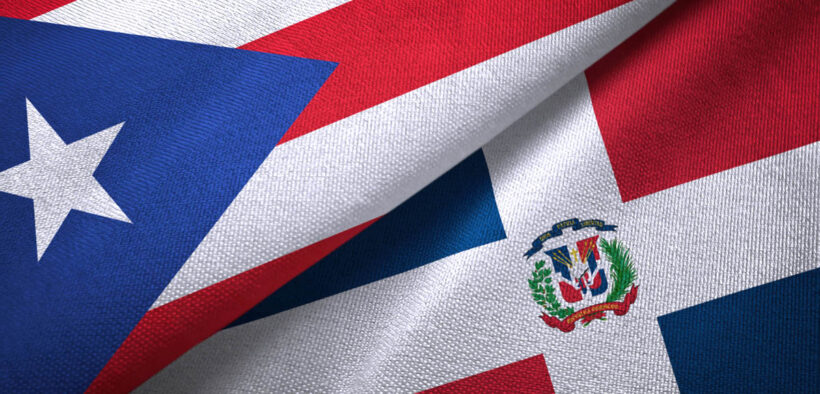Why Western Puerto Rico must look to Dominican Republic

Since the 16th century — when Puerto Rico was effectively split between two rival settlements — the western region has acted as a counterweight to San Juan’s political and economic dominance. Perhaps this is why so many milestones of Puerto Rican identity germinated not in the capital city but in San Germán, Mayagüez, Cabo Rojo, Lares, Añasco and Hormigueros. These towns have long served as the heart of our cultural and civic imagination. They have also, for generations, survived largely on their own.
Without venturing into a full historiographical analysis, the lived reality is self-evident: the municipalities of the so-called Porta del Sol have always had to fend for themselves, creating opportunity where the central government offered indifference and pushing forward even when policy decisions flowed in the opposite direction.
The West has survived — and in many instances thrived — through grit, imagination and an instinctive understanding that its destiny lies not in waiting for San Juan but in charting its own course.
Today, that course must turn more deliberately toward the other side of the Mona Passage: toward the Dominican Republic.
This is not some radical break with our past. It is, in fact, an affirmation of our western identity. For generations, families in Mayagüez, Cabo Rojo and Aguadilla have been connected — culturally and genealogically — to communities in Higüey, Samaná and San Pedro de Macorís. The 60 nautical miles between us have never been a barrier; they have been a bridge. What has been missing is the political will and logistical infrastructure to fully realize the economic potential of that bridge.
A natural partner, an overlooked opportunity
Measured with economic objectivity, the Dominican Republic has become one of the most dynamic economies in Latin America and the Caribbean. Its GDP has grown at an annual average of 5-6% in recent years — an extraordinary pace sustained through global shocks that stalled or reversed growth in much larger countries.
This momentum is driven by tourism, to be sure, but also by booming free-trade-zone manufacturing, a robust construction sector and a modernizing services economy. Under President Luis Abinader, the DR has maintained stable macroeconomic policies and aggressively courted foreign investment.
It has also leveraged DR-CAFTA to position itself as a manufacturing and logistics hub for the Western Hemisphere.
What often goes unnoticed in Puerto Rico is that this growth is not accidental — it is infrastructure-driven. The Dominican Republic has spent decades doing what Puerto Rico has hesitated to do: building. New airports, expanded ports, modern highways and integrated logistics corridors have transformed the country’s competitiveness.
Meanwhile, emerging sectors — renewable energy, technology, nearshoring — signal that the country is not simply growing but evolving.
Western Puerto Rico cannot afford to ignore this. Nor should it. By strengthening our own logistics capacity and building direct, efficient links with the DR, we can unlock a new era of economic revitalization — one not dependent on the political priorities or fiscal constraints of the San Juan metropolitan core.
A united western agenda
For this vision to materialize, mayors, business leaders, universities, diaspora networks, and local chambers of commerce must embrace a common strategy. No region has ever transformed its future through fragmented advocacy. Western Puerto Rico must speak with one voice and push — relentlessly — for strategic projects that can reshape our economic landscape. Among them:
1. Aguadilla-Punta Cana Air Route
A direct short-haul route between Rafael Hernández Airport and Punta Cana International Airport could become a catalytic connector. Punta Cana is the busiest airport in the Dominican Republic, with deep global connectivity — 44 weekly flights to Toronto, 32 to Montreal, 51 to Panama City, 11 to Frankfurt, 11 to London, eight to Madrid and dozens more to major hubs. Linking Aguadilla to this network would expand tourism, facilitate commercial exchange and offer western residents international access without traveling to San Juan.
2. Mayagüez-San Pedro de Macorís ferry
Spanish operator Balearia’s proposal for a modern ferry route would create a maritime corridor for goods, commuters, students and tourists. It would also reawaken the region’s maritime identity and reduce transportation costs for small and medium enterprises eager to reach new markets.
3. Redevelopment of the Port of Mayagüez
Once a strategic port, today underutilized, Mayagüez Harbor could become the logistical anchor of the western region. With targeted investment, it can serve as a transshipment point, cruise destination and commercial gateway between Puerto Rico, the DR, and the broader Caribbean Basin.
4. Conversion of PR-2 to an expressway in Mayagüez
A true expressway — one that finally eliminates bottlenecks through the urban core — would knit the region together, facilitate commerce, improve freight movement and better link the West to the South’s industrial potential.
5. Construction of an additional runway at Rafael Hernández Airport
A second runway is not merely an aviation project — it’s a statement of intent. It would position Aguadilla as Puerto Rico’s primary logistics and cargo hub, attracting investment in freight, cold storage, aerospace and e-commerce operations. With the fact that this airport is a foreign-trade zone (FTZ), the potential is limitless.
A choice between stagnation and strategy
Western Puerto Rico is no stranger to resilience. But resilience without strategy leads only to survival, not prosperity. For decades, we have waited for San Juan to see us, invest in us or prioritize us. The results speak for themselves.
By embracing our natural, historical and geographic relationship with the Dominican Republic — and by building the infrastructure that allows that relationship to flourish — we can reposition the western region as a competitive, interconnected and self-sustaining economic corridor.
The question is no longer whether the West can chart its own economic destiny. It is whether we finally choose to.
And the time to choose is now.

Jeffrey Quiñones-Díaz is a partner at The Consulting Lead LLC and works as a public affairs and policy consultant.











